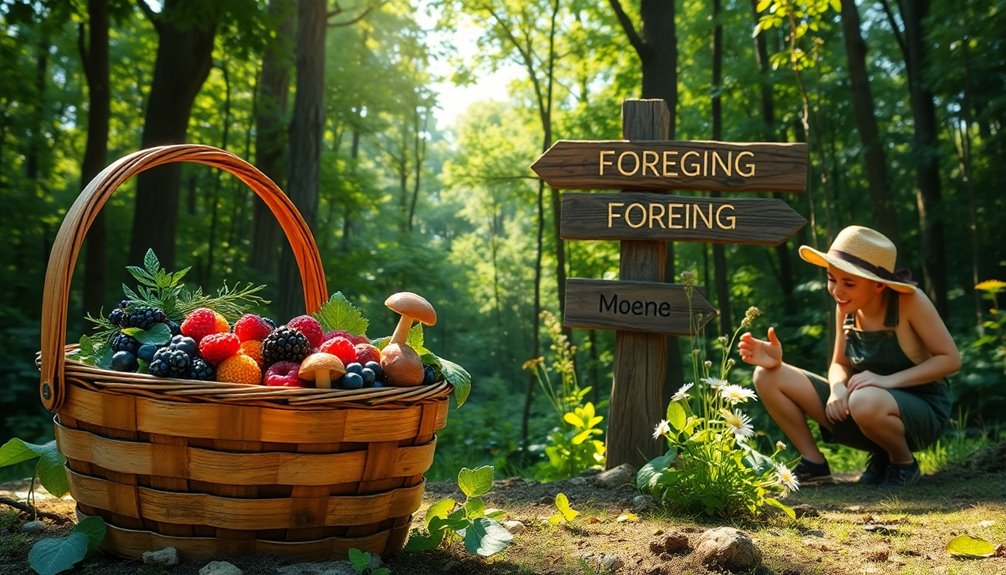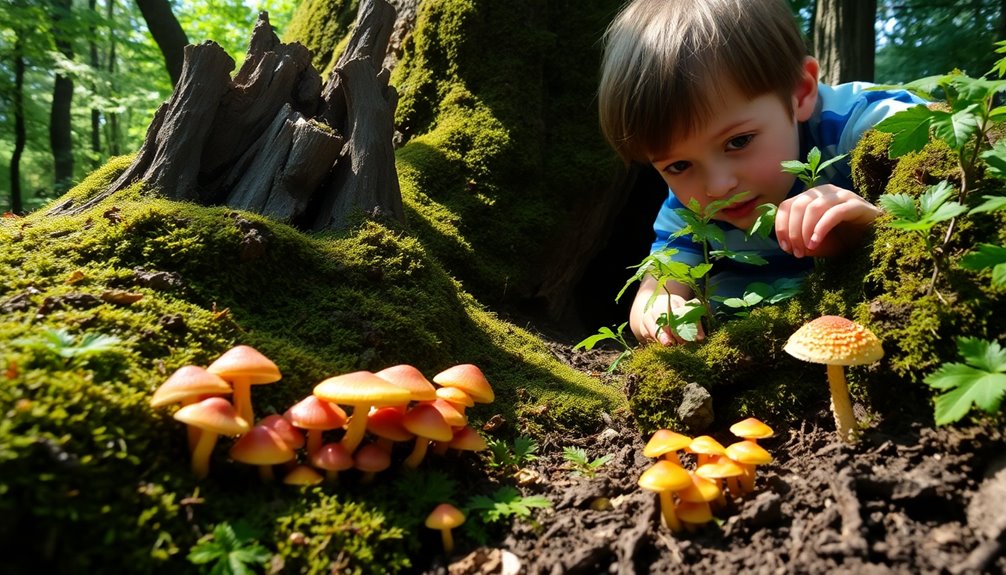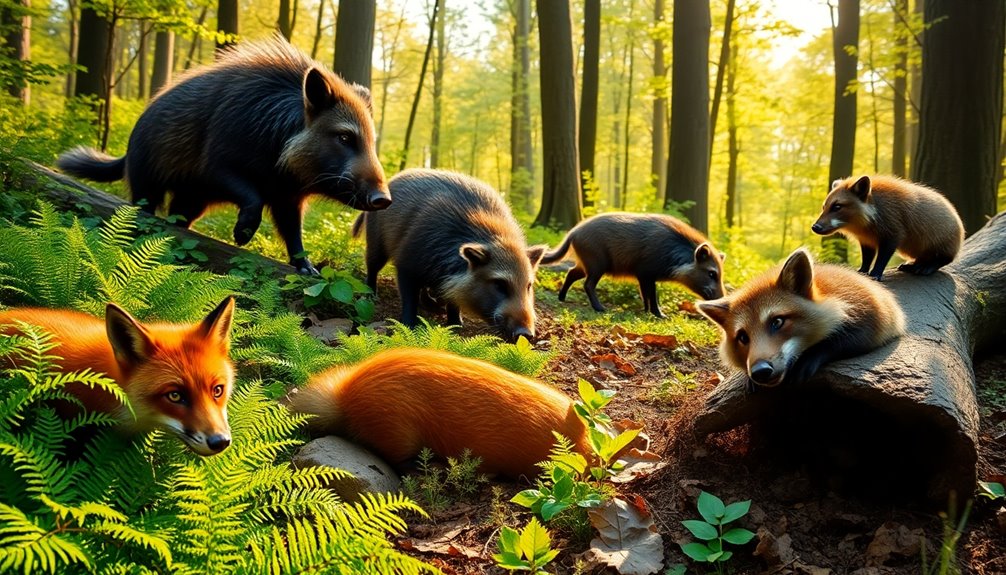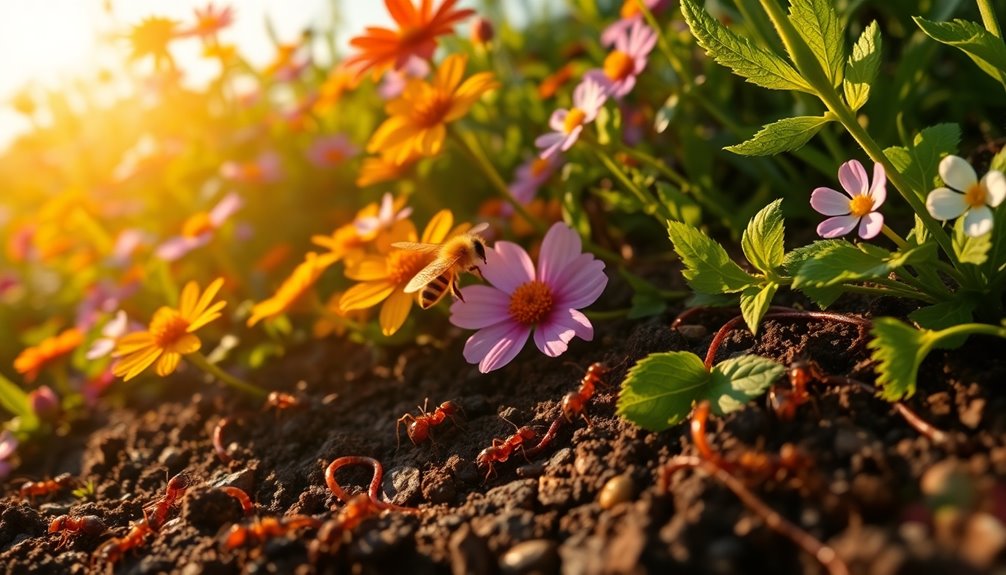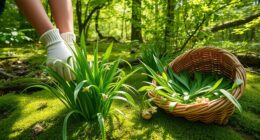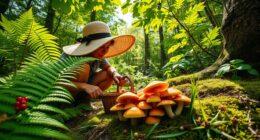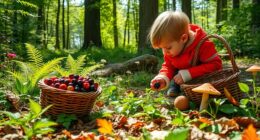To level up your foraging in Stardew Valley, you'll need 100 XP for Level 1 and a total of 15,000 XP to hit Level 10. Each forageable item you collect gives you 7 XP, while chopping trees earns you 12 XP. If you want to reach Level 10 efficiently, target around 750 trees or focus on clearing stumps and logs. Seasonal foraging is key, too—Spring offers Wild Horseradish, Summer is great for berries, and Fall has mushrooms galore. Keep gathering and you'll find success in no time, with even more strategies waiting for you ahead!
Key Takeaways
- Level 1 requires 100 XP, while Level 10 requires a total of 15,000 XP for foraging progression.
- Collecting forageable items grants 7 XP each, and chopping trees provides 12 XP.
- Chopping trees in the Secret Woods yields 13 XP per tree and 25 XP per stump.
- Seasonal items like Wild Horseradish in Spring and Blackberries in Fall boost XP gains significantly.
- Regularly clear stumps and forageables to maximize XP accumulation throughout the year.
Understanding Foraging Basics
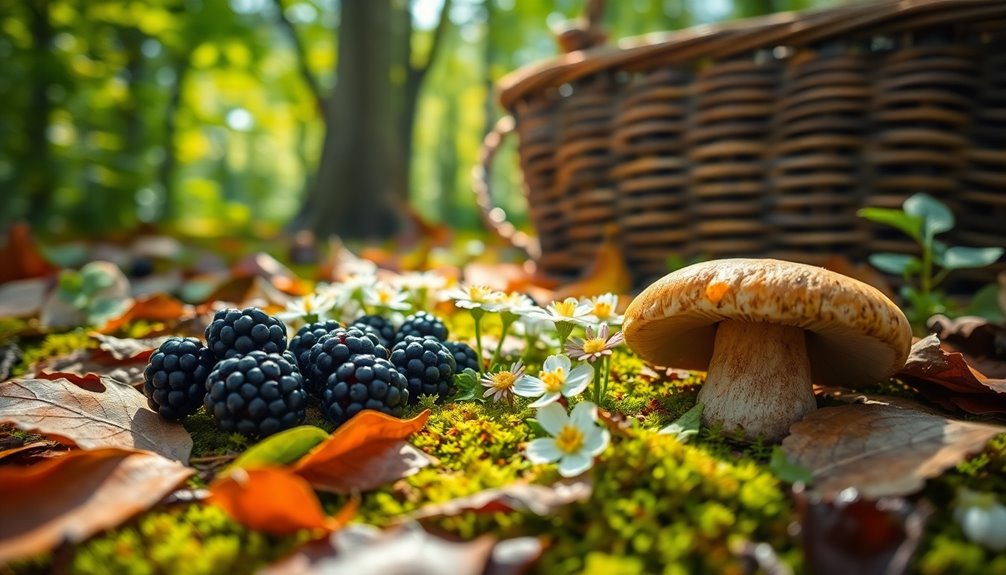
When you step into the vibrant world of Stardew Valley, foraging becomes one of your key skills. This skill involves collecting various resources like berries, flowers, and other forageable items scattered throughout the game. As you wander through the valley, you'll discover that each level of foraging requires more experience points (XP) to progress.
For example, reaching Level 1 requires just 100 XP, while hitting Level 10 demands a total of 15,000 XP. You'll earn XP by collecting forageable items, gaining 7 XP for each one you snag. If you chop down trees, stumps, or large logs, you'll earn even more XP—12 points for each.
To maximize your foraging success, pay attention to seasonal availability. Spring brings Wild Horseradish and Daffodils, while Fall is the season for Blackberries.
Choosing the Botanist profession can also enhance your foraging experience, allowing you to find higher-quality forageables that can be sold for better prices or consumed for greater health benefits.
XP Requirements for Each Level
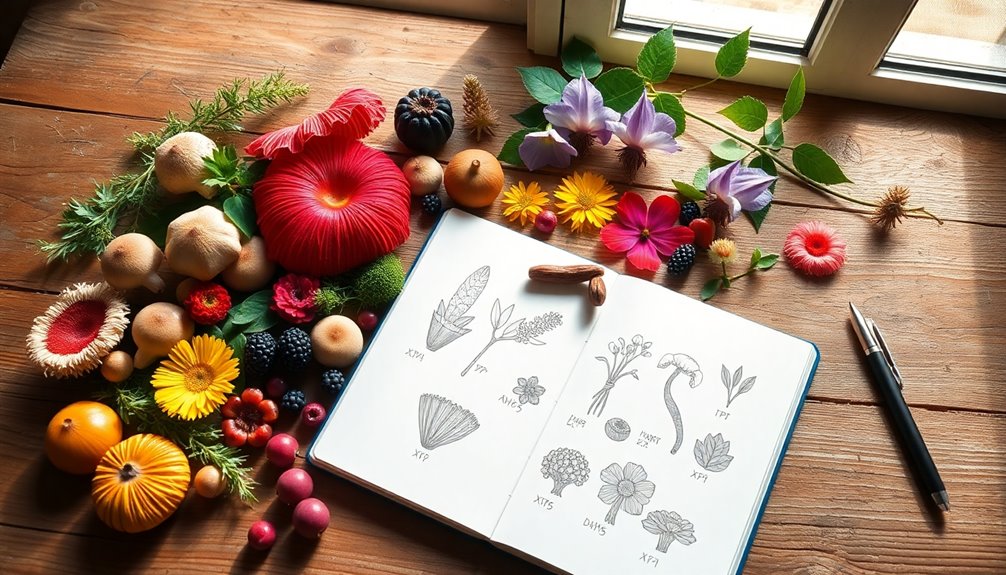
Each level of Foraging in Stardew Valley has specific XP requirements that you'll need to meet to progress. Starting from Level 0, you need a total of 15,000 XP to reach Level 10. At Level 1, you'll require 100 XP, and as you advance, each subsequent Foraging level demands progressively more XP.
For instance, to level up, you can collect forageable items, which grant you 7 XP each, or you can focus on chopping trees, earning 12 XP per chop. If you prefer a more hands-on approach, chopping down approximately 750 trees will help you reach Level 10.
Additionally, clearing stumps and logs contributes significant XP, so don't overlook these actions in your quest to boost your Foraging level. As you gather resources, keep track of your total XP to guarantee you're on the right path.
Balancing your activities between foraging and tree chopping won't only help you meet the XP requirements but also enhance your overall gameplay experience. Whether you're collecting berries or clearing your farm, every action counts towards leveling up your Foraging skill!
Efficient Foraging Strategies
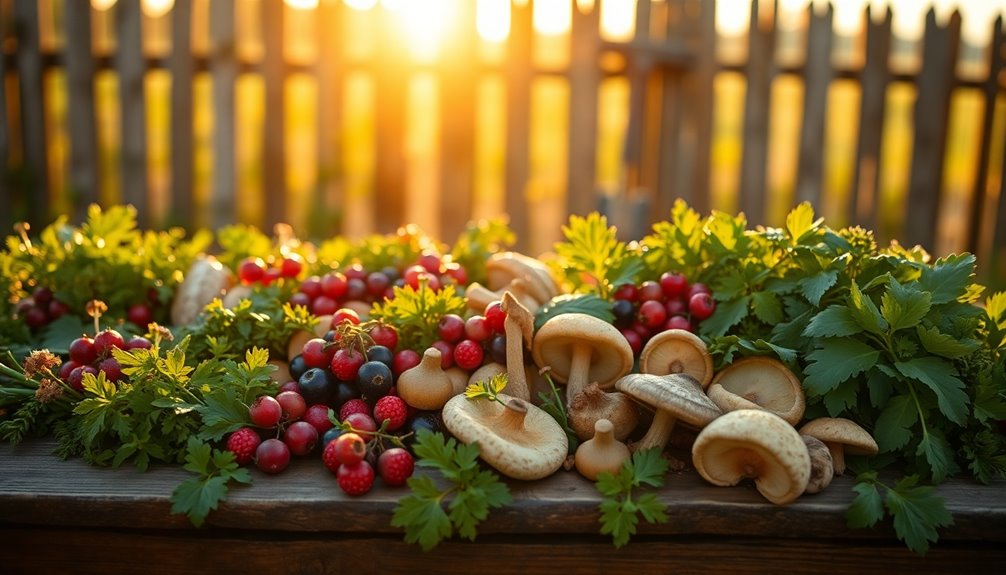
To level up your Foraging skill efficiently in Stardew Valley, focus on targeted activities that maximize your XP gain. One of the best strategies is chopping down trees in the Secret Woods. Each tree yields 13 XP, and stumps provide even more at 25 XP each. By clearing out trees and stumps regularly, you'll accumulate foraging exp rapidly.
Consider planting and harvesting 50 seasonal wild seeds each week starting in Spring. These seeds produce a variety of forage items, which not only diversify your collection but also contribute considerably to your XP per activity.
Engaging in foraging activities on Saturdays is also a smart tactic. With lower player activity earlier in the week, you can concentrate on gathering foraged items without distractions.
Lastly, don't forget to manage your environment. Clearing tree stumps and other foraged items consistently will enhance your XP accumulation, leading to faster leveling in your foraging skill.
Seasonal Foraging Tips
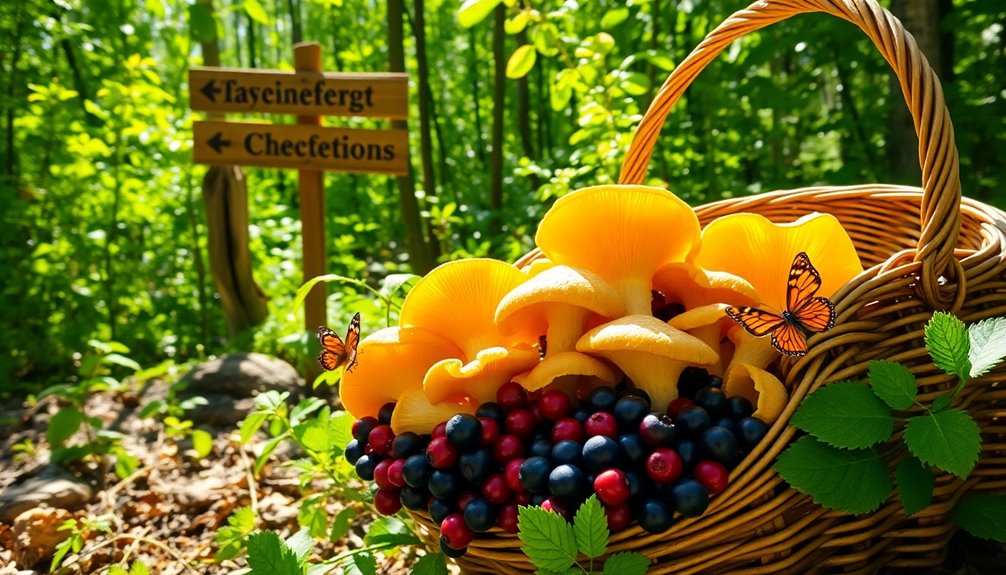
One of the best ways to maximize your foraging success is by understanding the unique seasonal opportunities available throughout the year. Each season brings its own set of foraging items that can greatly boost your foraging XP.
- In Spring, look for Wild Horseradish and Daffodils, especially during Salmonberry Season (Spring 15-18).
- Summer features an abundance of berries; don't miss the chance to gather them for easy XP.
- Fall offers mushrooms and acorns, with Blackberry Season (Fall 8-11) being a prime time for foraging.
- Winter may seem sparse, but you can still find Winter Roots and gather wild resources.
To enhance your foraging experience, consider planting 50 seasonal wild seeds weekly starting in Spring. This increases the variety of forageables you can collect.
Clearing areas like the Secret Woods each season also helps in consistently gathering seasonal forageables, maximizing your XP gain.
Finally, don't forget to utilize the desert trader to exchange spring seeds for summer seeds, ensuring a continuous supply of forageable crops throughout the seasons.
Happy foraging!
Resource Locations to Explore
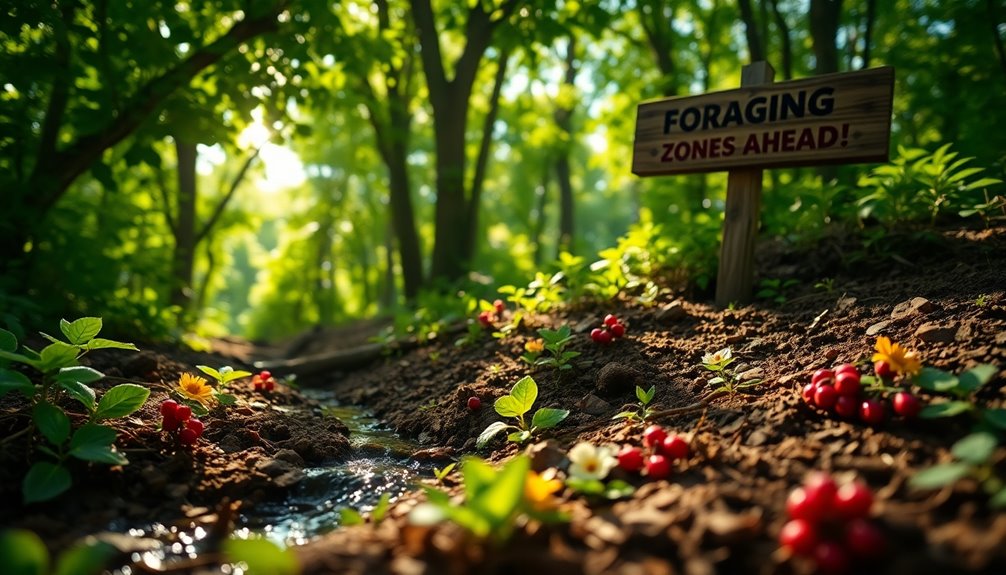
When you're looking to boost your foraging XP, check out the Secret Woods for its abundant stumps and trees.
Don't forget the Beach, where you can gather valuable sea items, and keep an eye out for seasonal harvests like Salmonberries and Blackberries.
Each of these locations offers unique opportunities to maximize your foraging experience.
Secret Woods Foraging Spots
The Secret Woods is a hidden gem for foragers looking to maximize their XP gains in Stardew Valley. This secluded area is packed with valuable forageable items and offers numerous opportunities to level up your foraging experience.
Here's what you can find:
- Wild Horseradish in Spring
- Daffodils in Spring
- Salmonberries in Spring
- Blackberries in Fall
Each visit can yield a variety of XP opportunities. Chopping down trees grants you 13 XP each, while stumps provide a whopping 25 XP.
The abundance of trees and stumps makes the Secret Woods an efficient spot to boost your foraging level.
During Blackberry season in Fall, be sure to take advantage of the increased forageable items available. Additionally, keep an eye out for the special Magic Rock Candy, which can be gathered by tapping Maple trees.
Seasonal Harvesting Areas
Exploring seasonal harvesting areas can greatly enhance your foraging experience in Stardew Valley. Each season brings a unique array of resources to gather, boosting your XP as you forage.
In Spring, head to the forest and beach to find seasonal items like Wild Horseradish and Daffodils. These items are abundant and perfect for leveling up your foraging skills.
Summer is prime time for gathering, especially with Salmonberries popping up along bushes between Spring 15 and 18. The forest and your farm are great spots to collect these tasty berries.
As Fall rolls in, don't miss out on Blackberry Season, which runs from Fall 8 to 11. Thickets and bushes throughout the valley are bursting with Blackberries, providing a fantastic foraging opportunity.
While Winter may seem sparse, you can still forage for Winter Roots in the forest and dig up Snow Yams in snowy areas. Though most forageables are scarce, every bit helps.
Remember, the Secret Woods offers valuable resources year-round, including stumps and hardwood trees, ensuring you consistently gather materials to enhance your foraging experience and XP.
Beach Resource Collection
Collecting resources along the beach can be a rewarding experience in Stardew Valley. The beach is a vibrant hub of forageable items, and with the right approach, you can boost your foraging XP daily.
During your beach foraging adventures, keep an eye out for these valuable items:
- Shells and corals
- Sea urchins and starfish (seasonal)
- Spring onions near the beach area
- Sea cucumbers for extra XP
Each item you collect can grant you up to 14 XP, making it a fantastic spot for leveling up your foraging skills.
To maximize your collection, visit during low tide when more items are exposed along the shoreline. Additionally, consider using the Tracker Profession, which helps you pinpoint forageable items more efficiently, enhancing your resource collection.
Professions and Buffs for Foraging
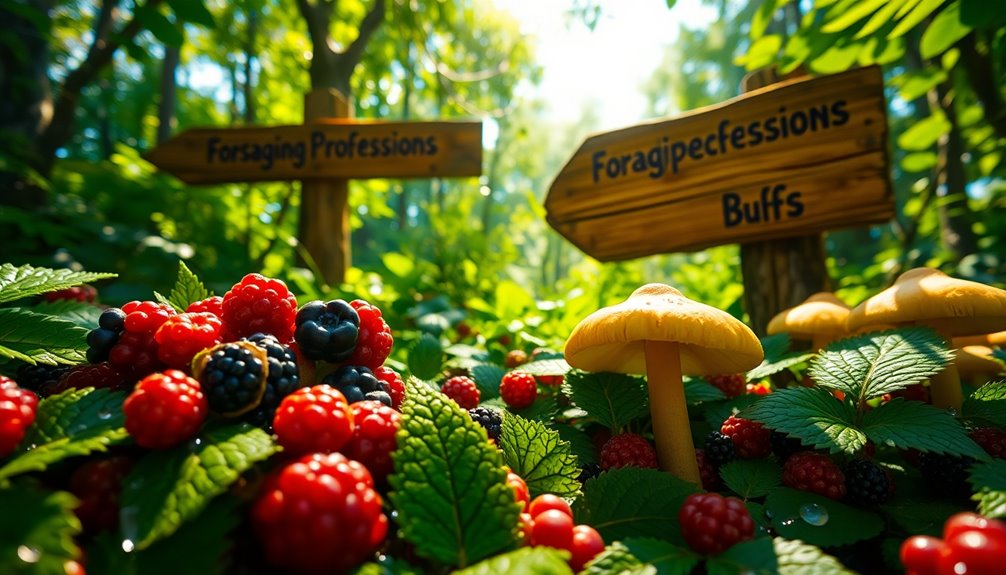
When you choose a foraging profession, you can greatly enhance your resource collection.
Each profession offers unique advantages, like the Botanist's iridium-quality items or the Gatherer's chance to double your harvest.
Additionally, temporary buffs from specific dishes can give you an edge, so it's smart to think strategically about your choices.
Foraging Professions Overview
In Stardew Valley, choosing the right foraging profession at level 5 can greatly impact your resource gathering efficiency and overall gameplay experience. You have several options that cater to different play styles, each enhancing your foraging skill in unique ways.
- Forester: All tree types yield Hardwood, perfect for crafting.
- Lumberjack: Enhances tree resource gathering, making it easier to collect wood.
- Botanist profession: Guarantees you always collect the highest quality forageables, maximizing your profits.
- Gatherer profession: Offers a double harvest chance for forageables, considerably increasing your resource collection efficiency.
If you're focusing on tapping trees, consider the Tapper profession, which boosts syrup selling prices by 25%.
Alternatively, you can switch professions at the Statue of Uncertainty for 10,000g, allowing you to adapt your skills based on your needs. Additionally, choosing sustainable materials for crafting can enhance your gameplay experience, aligning with eco-friendly practices that many players value.
Temporary Buffs Effects
Understanding how temporary buffs can enhance your foraging experience is key to maximizing resource collection in Stardew Valley. By utilizing specific dishes, like Pancakes and Autumn's Bounty, you can temporarily boost your foraging skill, making it easier to gather resources efficiently.
This strategy not only increases the number of items you collect but also maximizes your XP acquisition.
If you've chosen the Gatherer profession, you'll benefit from a double harvest chance on forageable items, further increasing your XP gain. Combining this with temporary buffs creates a powerful synergy that can greatly speed up your leveling process.
Additionally, don't overlook Qi Seasoning. This item can temporarily amplify your foraging skills, providing you with an edge as you scour the valley for valuable resources.
Choosing Professions Strategically
Choosing the right profession can greatly impact your foraging efficiency and profitability in Stardew Valley. By selecting strategic professions, you can enhance your foraging skill and maximize your XP gain.
Here are some key options to take into account:
- Gatherer profession: This gives you a double harvest chance for forageables, making it easier to collect resources and level up faster.
- Botanist profession: Opting for this guarantees all forageable items are of the highest quality, which boosts their selling price and health benefits.
- Forester profession: This allows all trees to yield Hardwood, valuable for crafting and construction, while also contributing to your foraging XP.
- Tapper profession: This boosts the selling price of syrups from tapped trees by 25%, enhancing your profits from foraging-related activities.
Additionally, focusing on native plants in your farm layout can help increase the variety of forageables available, further aiding your foraging growth.
Managing Your Inventory
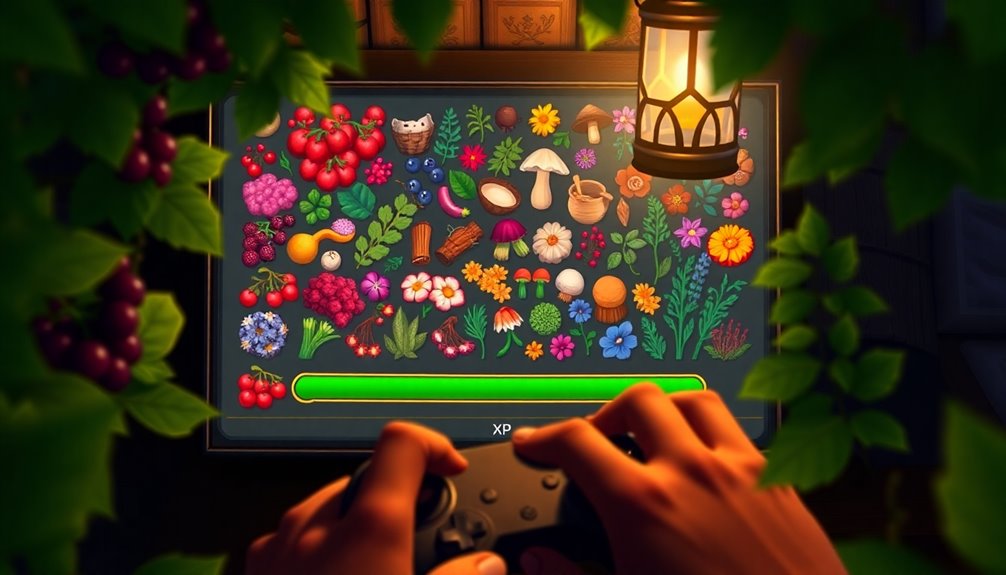
Efficiently managing your inventory is essential for maximizing your foraging experience in Stardew Valley. Prioritize collecting only essential forageables to keep your inventory from filling up with low-value items. Focus on gathering items that can be used for crafting or selling, as these will boost your XP and provide valuable resources.
Consider crafting and storing surplus forageables in chests. This tactic frees up space for more valuable finds while ensuring you have a steady supply of materials when needed. If you come across forageables that aren't crucial for crafting or selling, consume them instead. Many items offer health and energy boosts, helping you stay active during your foraging adventures.
Regularly check your inventory and sell or process excess forageables to make room for new items, especially during peak foraging seasons. You'll want to be ready for all the harvests!
Additionally, utilize community center bundles as an effective inventory management strategy. Completing these bundles rewards you with useful items and helps clear out excess forageables, making your foraging experience even more efficient. By keeping your inventory organized, you can maximize your success in Stardew Valley!
Community Resources and Support
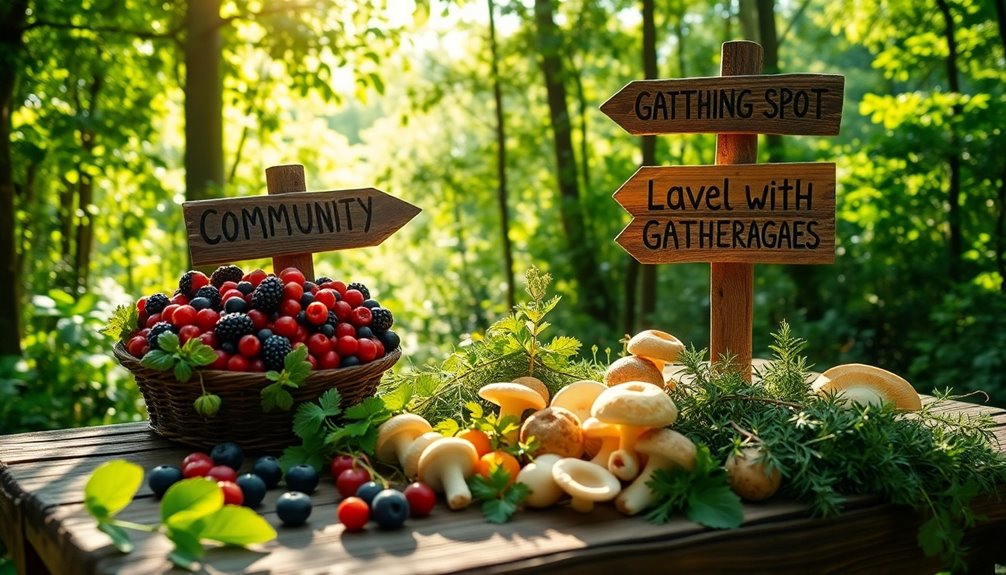
As you refine your foraging skills and manage your inventory, tapping into community resources can greatly enhance your experience in Stardew Valley.
The game's vibrant community offers a wealth of knowledge that can help you navigate the complexities of foraging and improve your efficiency.
Here are some key community resources you should check out:
- Stardew Valley Wiki: A thorough source for foraging mechanics, XP requirements, and seasonal forageable items.
- Forums and Social Media: Engage with other players to discover efficient foraging strategies and resource management tips.
- Community Challenges: Participate in these events to share successful foraging techniques and learn from others' experiences.
- Forage Finder Tools: Utilize community-created tools to pinpoint locations of forageable items, enhancing your foraging efficiency.
Frequently Asked Questions
How Much XP per Level Foraging Stardew Valley?
In Stardew Valley, foraging XP is structured with increasing requirements as you level up.
You'll need 100 XP for Level 1, and by the time you hit Level 10, you'll need a total of 15,000 XP.
Collecting forageables gives you 7 XP each, while chopping trees earns you 12 XP.
Mixing different activities like harvesting wild seeds can help you accumulate XP faster and boost your foraging skills efficiently.
What Is the Fastest Way to Level up Foraging in Stardew Valley?
To level up foraging fast in Stardew Valley, focus on chopping trees and stumps while collecting forageables daily.
Clear areas like the Secret Woods for maximum XP, as trees grant 13 XP and stumps give 25 XP.
Planting wild seeds and crafting seasonal seeds will also boost your XP gain.
Try to engage in foraging activities on Saturdays for better efficiency, and consistently manage tree growth by replanting to keep the XP flowing.
How Many Trees to Get Level 10 Foraging?
To reach Level 10 Foraging, you'll need to chop down a whopping 750 trees.
Think of it as a forest symphony, where every tree you fell adds a note to your melody of progress. Each chop grants you 13 XP, while clearing stumps offers a generous 25 XP.
How Much XP for Level 10 Stardew Valley?
To reach Level 10 in Stardew Valley, you'll need to gather a total of 15,000 XP.
You can earn XP by chopping trees, collecting forageable items, and harvesting stumps. For instance, chopping down a tree gives you 13 XP, while a stump provides 25 XP.
Combining these activities, like daily foraging and tree replanting, will help you achieve that goal, ideally before the end of your second summer.
Conclusion
In the world of Stardew Valley, leveling up your foraging skills is like planting seeds for future success. By understanding XP requirements and employing efficient strategies, you'll reap a bountiful harvest in no time. Remember to explore different seasons and manage your inventory wisely to keep your foraging adventure thriving. With community resources at your fingertips, you're never alone on this journey. So grab your basket and plunge into the lush landscape—your foraging mastery awaits!

